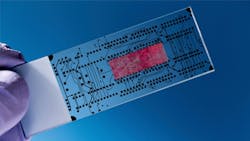Buying Trends: MEMS
There are very few corners of the electronics world that haven’t been touched in some way by microelectromechanical systems or “MEMS.” Comprised of several nanoelectromechanical components that are embedded in semiconductor chips, MEMS include the microcircuits on which small sensors and other components are placed. With applications in the automotive, consumer, electronics, aerospace and defense, healthcare, and industrial markets, MEMS support functionalities such as GPS, audio, video, motion sensing, and gesture recognition, among others.
MEMS on the Move
According to Technavio’s Global MEMS Market for Consumer Electronics 2015-2019, the United States and South Korea are the leading countries generating revenue in the global MEMS market for consumer electronics. The market is expected to grow at a CAGR of 10.7% during the period 2014-2019—from $5.9 billion in 2014 to $9.8 billion in 2019. The key growth drivers will be the short replacement cycles of portable electronic devices, the miniaturization of electronic devices, and the increased adoption of wearable devices.
“The growing market for smartphones and tablets is propelling the demand for integrated MEMS devices,” Technavio states in its report. “The functionalities of smartphones and tablets, from gesture recognition to navigation, are being enabled by MEMS. This allows the consumer electronics vendors to integrate MEMS into their end products on a cost-effective and compatible platform. Therefore, the demand for MEMS in smartphones and tablets is expected to lead to high margins and revenues in the consumer electronics market.”
According to research firm IHS, at least some of the need for more innovative sensors is also being driven by handset manufacturers in China. IHS Senior Analyst Marwan Boustany says both Apple and Samsung are forecast to remain the dominant buyers of sensors for smartphones until 2019. Chinese OEMs are accounting for more and more of the revenues from sensors sold to the smartphone market, with IHS forecasting their share of the total to increase from 18% in 2014 to 32% in 2019.
“The smartphone market is healthy, dynamic, and extremely competitive; Chinese OEMs are proving willing to try any new technology to allow them to compete better,” Boustany states. “Of the many Chinese manufacturers of handsets … Xiaomi will consume the greatest value of sensors in 2019.”
Price and Availability
With current availability of MEMS “fairly good,” and with more related electronics achieving commodity status, expect pricing on these items to remain stable over the coming six to 12 months.
“The less differentiated the functionality, the more commoditized the product itself becomes,” says Boustany, who encourages buyers to keep an eye on the major developments affecting their raw material requirements. “Once you have a situation where a product is enabling a process due to better performance, or introducing a new technology, there is scope for getting higher pricing.”
Other issues that could affect MEMS pricing in the future include the volume requirements and custom packaging needs of individual users—namely within the industrial sector.
“While it’s hard to predict where MEMS prices will head,” says Boustany, “it’s important to note that these and other issues can have an impact on price structure, particularly in the industry use-case scenario.”
New MEMS Innovation Ahead
Within the industrial space, Boustany says he sees demand growing for MEMS-based microphones, particularly within the automotive industry.
“These items tend to be a little smaller, more rugged, and more sensitive than their predecessors were,” he says, pointing to Vesper as one manufacturer that’s making strides in this area. “We’ve reached a point where this microphone technology can be applied anywhere, including in the industrial, automotive, and consumer spaces.”
Also interesting, says Boustany, is the development of optical MEMS microphones that boast “dramatically better performance” than earlier options. He says he also sees more ultrasonic fingerprint sensors (non-MEMS) and other authentication-related devices being developed by companies like Vkansee and Sonavation, Inc. Finally, he predicts more industrial usage of light sensors—or more specifically, laser auto focus—in the future.
“ST Microelectronics is already shipping these MEMS devices in large volumes,” says Boustany. “It’s easy for them to support typical use cases in applications like automotive and industrial.”






